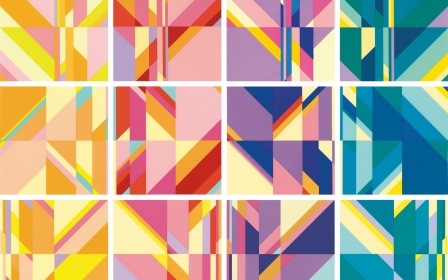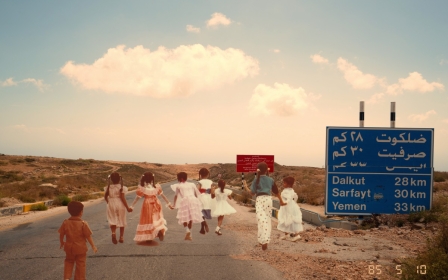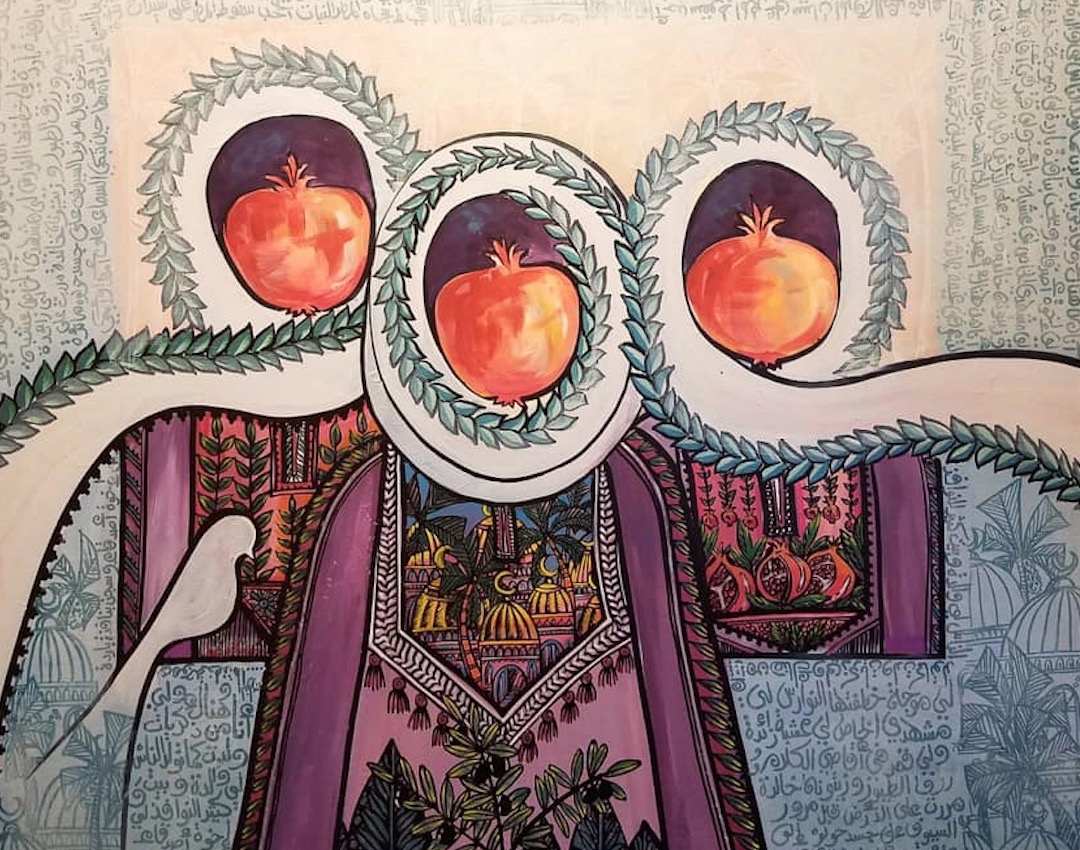
In pictures: Palestinian heritage celebrated in online exhibition

A Palestinian woman grinds the thyme-based spice mix, zaatar, by hand, in The Old Promise, painted by Palestinian artist Wael Rabee. The subject, a refugee from Lifta, Jerusalem, was displaced in 1948 and now lives in Ramallah. The piece is part of the Colours of Return, an online art exhibition of works by 31 artists aimed at preserving Palestinian identity and showcasing the beauty of Palestinian heritage, whilst also drawing attention to the hardships faced under years of occupation.
The main image by Dalia al-Kilani, a Palestinian-American artist, titled I am from there, depicts key elements of Palestinian heritage, from clothing to architecture and the pomegranate fruit.

Rabee started drawing and painting as a young boy in exile, typically using realism to express himself in his work and give his art a photographic element to accurately reflect his subject and represent life around him as truthfully as possible. He has since participated in a number of international exhibitions and his work can be found in literary works, magazines and periodicals.
The exhibition, which includes paintings like Irena Naji's Jerusalem's Olives (above), caricature, photography and drawings, went live in May. The month is of significant importance to Palestinians since it marks 72 years since the Nakba, or Catastrophe, which led to the displacement of over 750,000 people from their homes.

Every year in May, Palestinians celebrate their heritage, and call for their right of return to their homeland. This year was no exception, despite the extenuating circumstances. “The current conditions the world is going through, such as the coronavirus pandemic, has led us to organise this exhibition electronically," exhibition curator Raed Qatanani says. "The participation of artists from around the world emphasises the universality of our cause.” The painting above, In Our Land We Remain, by Hanan Nakhal, shows a Palestinian woman during olive-picking season.

This painting, titled The Return of Salahaddin by West Bank-based Palestinian artist Mahmoud Abu Daghash, represents the return of the 12th-century Muslim leader who reconquered Jerusalem from the Crusaders. After graduating from the Palestine Technical University, Abu Daghash decided to pursue a passion in the arts, teaching himself how to paint through online tutorials. Since then, he has gone on to receive several awards for his work.
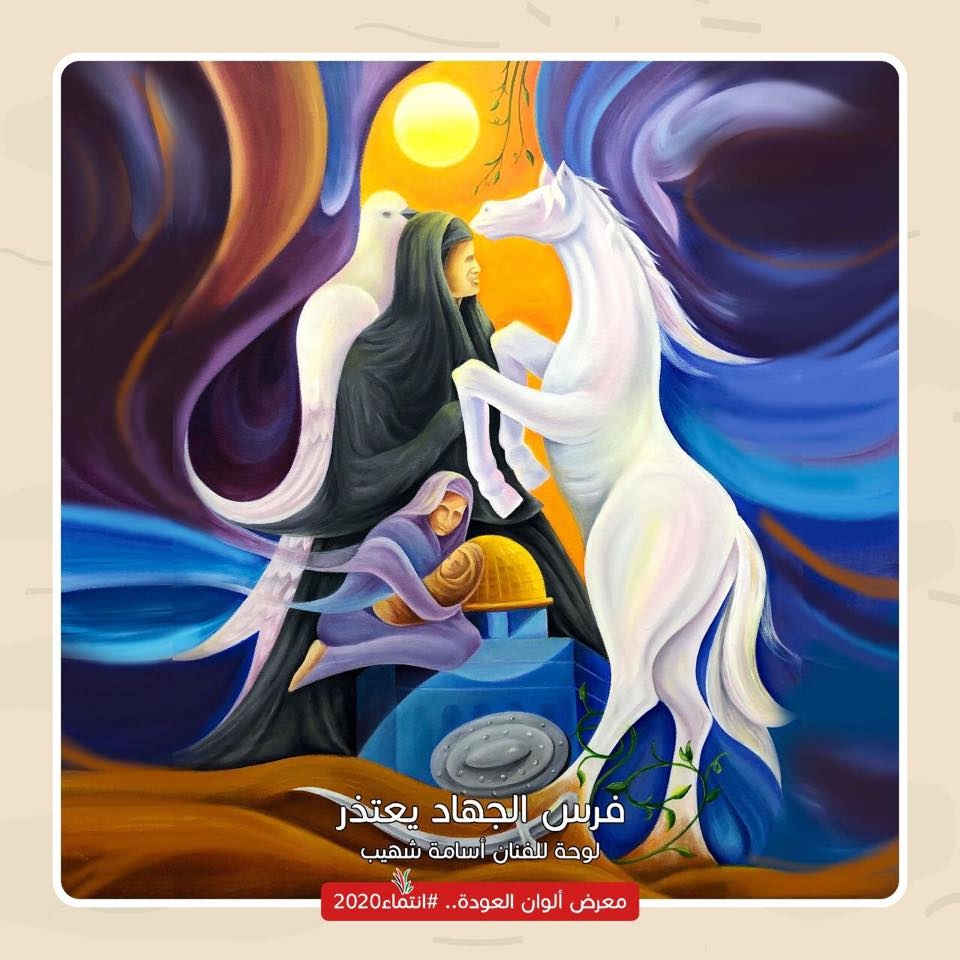
Each artist participating in the digital exhibition chose a theme, ranging from food and architecture to occupation and daily life, which best represents Palestinian culture and experience from their perspective. This painting, titled The Horse of Jihad Apologises, by Egyptian artist Osama Shohaib, depicts the Dome of the Rock surrounded by Palestinian women. The white horse represents peace and a desire to end the conflict. A visual arts teacher and calligraphist living in Port Said, Egypt, Shohaib has taken part in over 50 international exhibitions including in Saudia Arabia, Qatar, Egypt, Jordan and Morocco.
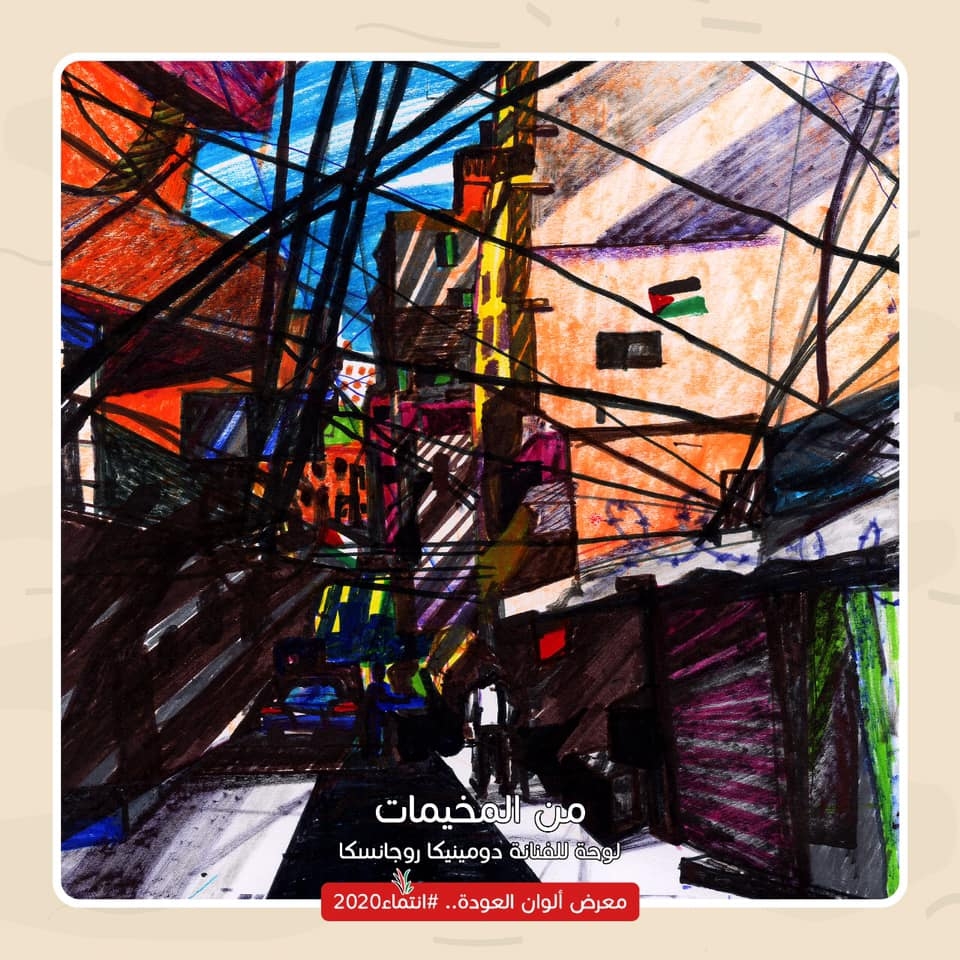
Polish artist Dominica Rojanska chose to depict the narrow alleyways and makeshift homes many Palestinians have been confined to as a result of the Israeli occupation. Her painting, From the Camps, illustrates the conditions Palestinians in refugee camps are living in. Krakow-based Rojanska uses her art to raise awareness of the Palestinian cause and has participated in several exhibitions in Poland.
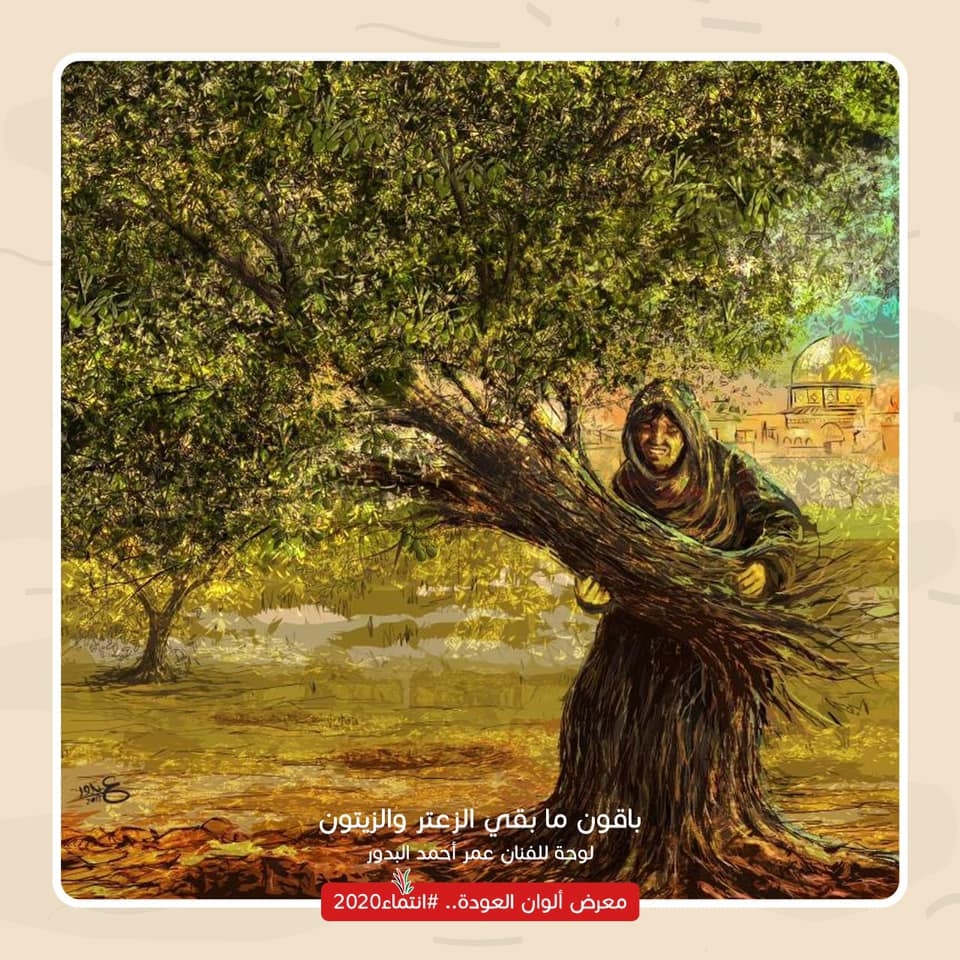
Jordanian artist Ahmed Al-Badour's painting We Remain as Long as the Thyme and Olive Trees Remain (above), shows a Palestinian man whose lower body has morphed into the roots of an olive tree, symbolising the resilience of the Palestinian people and their attachment to their land. His expression of sorrow is intended to reflect the devastation caused by Israeli settlers, who often uproot olive trees which have been planted by Palestinians for generations as a form of livelihood, in order to clear land.
Like the rest of these artists, al-Badour uses his work to highlight the plight of Palestinians. In his case it is the struggle of refugees in Jordan whose status leaves them vulnerable to unempolyment, inadequate housing, insecurity and poverty.
Middle East Eye delivers independent and unrivalled coverage and analysis of the Middle East, North Africa and beyond. To learn more about republishing this content and the associated fees, please fill out this form. More about MEE can be found here.


